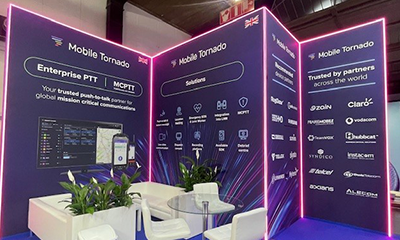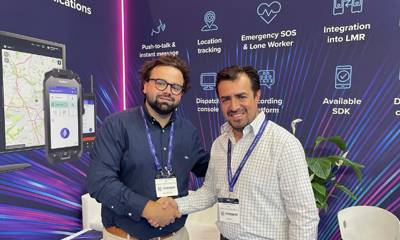With the growth in mobile networks creating new opportunities for critical communications, we thought it would be useful to discuss the benefits of push-to-talk over cellular technology (PTT).
Push-to-talk over cellular (also known as PTT, PTToC and PoC) enables instant communications between individuals and groups – at the touch of a button. As well as voice communications, this can also include instant messages, attachments and multi-media communications. The rapid communication reduces response times, improves communication and increases effectiveness, making it ideal across a wide range of industry sectors for critical tasks and time-sensitive activities.
Group Communication is vital in scenarios where multiple team members need to stay coordinated. Groups of users and work teams can communicate effortlessly, ensuring enhanced teamwork and increased efficiencies.
What’s more, PTT minimises the time spent on voice calls, as it allows for quick, clear, and concise communication. Systems often come with noise-cancelling features, ensuring that messages are transmitted clearly, even in noisy environments. This reduces downtime and improves overall efficiency and safety in the workplace, and is crucial in industrial settings, construction sites, or areas with high ambient noise levels.
PTT systems can operate over various networks, including cellular, Wi-Fi, and even satellite. This flexibility enables communication across different geographical regions, making it an invaluable tool for businesses and organisations with remote workforces, lone workers and teams based in a number of different locations.
Push-to-talk technology also reduces the costs associated with traditional two-way radios, which require expensive infrastructure. Instead, it relies on existing networks like cellular data, which is more cost-effective and scalable. And it’s not just the infrastructure costs, two-way legacy radios often require extra accessories such as batteries, chargers, headsets and microphones.
In addition, PTToC solutions can be easily scaled up or down to accommodate the changing needs of an organisation. This flexibility is crucial for many businesses.
In addition to instant communication, PTT systems can also include GPS tracking, enabling users to track and locate team members in real-time. This is another great feature for remote workforces and lone workers, and helps to keep users safer and provide help quicker in the event of an emergency. The technology can also include other safety features, including emergency (SOS) alerts.
Push-to-talk over cellular can be integrated with various technologies and software, including dispatch systems, mobile apps, and wearable devices. This interoperability streamlines workflows and enhances overall productivity.
PTToC technology offers secure communication options, including encryption, ensuring that sensitive information remains confidential. This is particularly important for businesses that handle proprietary or classified data.
In conclusion, push-to-talk over cellular technology provides a range of benefits, from enhancing individual and group communication to improving safety, efficiency and scalability. Whether in public safety, transportation, manufacturing, logistics, hospitality or other industries, PTT systems have proven to be a reliable and versatile, and able to adapt to the evolving needs of modern businesses and organisations.
Find out how push-to-talk over cellular (PTT) technology compares to two-way radio technology (TETRA, DMR and P25) here.




